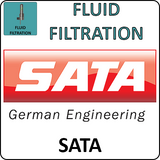Carlisle Binks
Binks 841005 High Pressure Fluid Filter SS 1/2 70MS
Regular priceUnit price /UnavailableCarlisle Binks
Binks 37-2000; 1" Sanitary 15GPM Filter Assembly
Regular priceUnit price /UnavailableCarlisle Binks
Binks 841006 High Pressure Fluid Filter SS 1/2 100MS
Regular priceUnit price /UnavailableTotal Finishing Supplies
Medusa™ High Pressure Filter Manifold & Fluid Regulator Package
Regular priceUnit price /UnavailableCarlisle Binks
Binks 101-2097 Material Filter/ Pulsation Chamber ASM (LEL)
Regular priceUnit price /UnavailableAnest Iwata
Anest Iwata Paint Delivery Filter Set TF-8N (32:1, 36:1)
Regular priceUnit price /UnavailableCarlisle Binks
Binks 41-28362 High Pressure Fluid Filter Assembly
Regular price FromUnit price /Unavailable



























